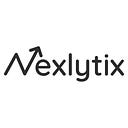Retail is filled with disjoined data sources — POS systems, online sales, inventory management, customer service, and much more —the ability to integrate this disjoined data cohesively is no longer a luxury but a necessity. Yet, data integration is often fraught with obstacles, from mismatched data formats to siloed information and inconsistent definitions across functions. At Nexlytix, we know that achieving successful data integration requires more than just technical infrastructure; it demands an intelligent, unified approach that aligns with the unique needs of the retail sector.
In this blog post, we’ll explore the critical role data integration plays in unlocking the value of retail data. Building on the data profiling foundation, we’ll discuss the common challenges retailers face and the strategies to overcome them, including advanced integration techniques that make it possible to bring together data for true, 360-degree insights.
Why Data Integration is Absolutely Essential in Retail
In retail, data integration is more than centralizing information; it’s about creating a complete and accurate picture of the business, it has to tell the story. Without integrated data, insights remain fragmented, limiting a retailer’s ability to respond quickly to market changes, understand customer behavior across channels, or optimize inventory to match demand. A good data integration practice empowers retailers to:
Improve Decision-Making: When data is integrated across functions, it enables cohesive insights that support smarter decisions — such as aligning inventory with sales forecasts or tailoring marketing to customer purchase trends.
Enhance Customer Experiences: By integrating data, retailers can create a seamless customer journey across channels, improving personalization and engagement.
Optimize Operational Efficiency: Integrated data enables a streamlined view of operations, allowing retailers to identify inefficiencies and make adjustments in real-time.
Challenges in Data Integration for Retail
The journey to effective data integration in retail can be challenging due to several factors. Here are the most prevalent hurdles that retailers encounter:
Data Silos: Each department often maintains its systems, leading to isolated data. This fragmentation makes it difficult to combine data for holistic insights.
Inconsistent Data Formats and Definitions: With data flowing from multiple sources, formats often vary, and definitions for terms like “customer” or “transaction” can differ between systems. This misalignment can cause inaccuracies when merging data.
Data Quality Issues: Without proper data quality control — like the data profiling discussed in our previous post — errors, duplicates, and missing values often propagate into integrated datasets, leading to unreliable insights.
Legacy Systems: Many retailers still operate on legacy systems that lack the capabilities for modern data integration. These systems often struggle to interface with new technology, creating a barrier to seamless integration.
Real-Time Integration: Retail data is constantly updating, but integrating it in real-time across systems is a significant challenge. Many retailers lack the infrastructure to support continuous data flow, limiting their agility in decision-making.
Industry Trends: Data Integration Advancements for Retail
As retail data complexity grows, so do the methods and technologies for integration. Here are some key advancements shaping the future of data integration:
Data Virtualization: Data virtualization allows retailers to access and analyze data in its original location without moving it, providing real-time insights while minimizing data duplication.
API-Driven Ecosystems: APIs facilitate seamless connections between systems, enabling integration of everything from ERP and CRM systems to point-of-sale and e-commerce platforms. This approach reduces the need for manual data movement and provides a more agile integration solution.
Cloud-Based Data Lakes: Cloud-based data lakes provide a scalable solution for managing vast amounts of data. By consolidating data in a cloud environment, retailers gain a centralized hub for analytics, where they can leverage AI and machine learning for deeper insights.
Event-Driven Architecture: Event-driven architecture allows data to be processed as soon as it’s generated, ensuring timely insights and making it easier to manage real-time integration. This is particularly useful for demand forecasting and inventory management, where quick response times are essential.
Overcoming Challenges: The Nexlytix Approach
At Nexlytix, we approach data integration with a blend of strategy, technology, and deep retail expertise. Here’s how we help retailers overcome these challenges:
Unified Data Framework: By establishing a unified data framework, we bring together various data sources under a common structure. This framework includes standardized definitions and processes, enabling smooth data alignment and integration.
Advanced ETL Solutions: Using modern ETL (Extract, Transform, Load) tools, we streamline the integration of data from disparate sources, automating much of the transformation work needed to ensure data compatibility.
Real-Time Data Pipelines: We leverage real-time data pipelines to support continuous data flow, ensuring that retailers can access up-to-date information across systems. This capability enables retailers to respond to customer behavior and operational needs in real-time.
Data Governance: A strong data governance model is essential for successful integration. We help retailers establish governance standards that maintain data quality, consistency, and security across departments.
AI-Driven Insights: With AI-based pattern recognition, Nexlytix’s solutions go beyond simple data consolidation. We help retailers uncover hidden patterns and trends, providing predictive insights that inform proactive strategies.
Conclusion
In the fast-paced retail industry, where data is both a strategic asset and a competitive advantage, effective data integration is key to success. By addressing common integration challenges and adopting advanced strategies, retailers can unify their data, leading to more accurate insights and informed decision-making.
At Nexlytix, we guide retailers through this complex journey, ensuring they have the tools and frameworks needed to navigate integration challenges and unlock the full potential of their data.
Ready to streamline your data integration? Discover how Nexlytix can simplify your data landscape and unlock actionable insights. Visit our website or connect with us at connect@nexlytix.com to see how we can help drive your retail success through seamless data integration.
